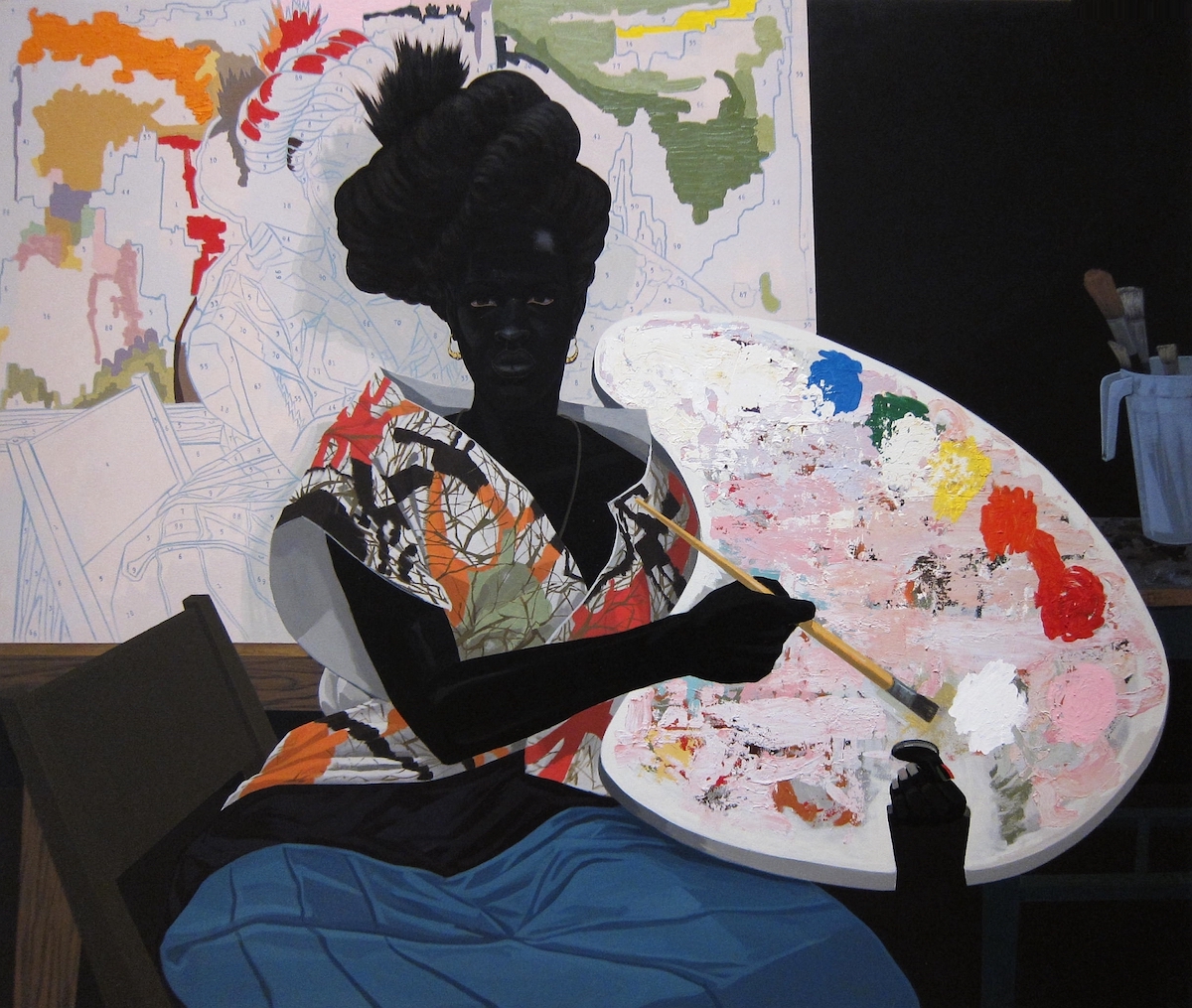Black Histories, on Walls and Screens, and the Santa Barbara City College Atkinson Gallery
Special Black History Month Playlist Shows at SBCC and on YouTube

As much as it is advisable to seize any opportunity to visit the Atkinson Gallery — Santa Barbara City College’s gallery with a stunning view — its current exhibition can be viewed either on its site or in the comfort of your YouTubed screened space. In either mode, welcome to The Essentials #4: Black History and Contemporary Art, a special playlist of videos showcasing important Black artists, as curated by Gallery Director John Connelly.
In effect, the playlist/exhibition serves the dual purpose of illustrating the convergence of Black life and art-world issues put forth by three African-American artists of note, cross-talking with Black history in America, in sync with February’s Black History Month status. Established artists Arthur Jafa, Kerry James Marshall, and Lorna Simpson deal with the legacies of being Black in America and developing highly personal artistic paths and media toward the subject.
In the case of Simpson, whose work began its art-scene ascent in the 1980s, genre and medium have been fluid and ever-changing. Collage, photography, painting and sculpture, and mutations thereof, have been part of her palette along her continuing and metamorphosing artistic path. Simpson explains that being steeped in music, dance, and other art forms as a child growing up in New York City “opened me up to the idea of authorship. People make things and make up things and create entire worlds.”
Her visual “made-up” worlds often tap into popular culture and visions of Black archetypes, as with her influential series of collages based on imagery snipped and re-contextualized from archival Ebony and Jet magazines. Variations on self-image among Black women are a recurring theme for Simpson, in whatever art form her impulses take her.
Jafa has also long worked with collage, first in physical scissored forms and then digitally, including relevant video clips, and often juxtaposing the “complex of majesty and mystery” he finds in the Black experience throughout history. One piece he connects with as iconic is “Ex-Slave Gordon,” a rugged Black man with a disfigured back, suggesting the stigma of slavery and the strength of the Black spirit despite adversity.
“It’s human instinct to recoil from things we find disturbing,” Jafa explains. “But if something disturbs me, I’m curious why it disturbs me.” That’s where his artistic voice and exploration get to work.
Painter Marshall has long explored the realms of Black experience and worked to counterbalance the limited scope of the predominantly white male domain of art history, seeking to create Black-centric imagery and “to see things that are unseen.”
“There are no Black ‘old masters,’” he comments, pointing out that Back figures are generally seen in the periphery, as shown in Édouard Manet’s iconic “Olympia,” with its Black maid folded into the darker background of the nude prostitute in the spotlight.
“I went to art school,” he notes in a video linked to his 2016 retrospective at the Museum of Contemporary Art, Chicago. “You’ve signed up to be part of this systemized and codified system of art.”
But he put himself in the service of focusing on Black subjects, in a distinctive style slyly inflected with aspects of folk art and depictions of Black people in America, which puts old-school academic art world values on notice. A new voice had arrived, as with his painting updating the kitschy “Freedom Fighters” trinity image of ’60s martyrs MLK, JFK, and RFK, adding other significant bygone Black figures into the picture.
“I never think of my paintings as self-expression,” says Marshall, “but exclusively as a platform for an idea — for instance, how you reference culture and history in pictures.”
View the exhibit on the Atkinson Gallery YouTube channel or by visiting gallery.sbcc.edu.
Support the Santa Barbara Independent through a long-term or a single contribution.



